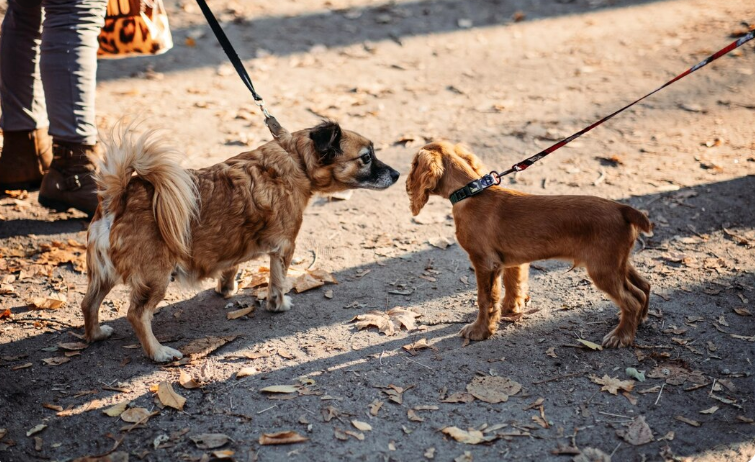
Introducing your dog to other dogs can be a rewarding experience when approached thoughtfully and safely. Whether you’re welcoming a new canine companion into your home or facilitating social interactions at the park, proper introductions are crucial for fostering positive relationships and preventing conflicts. This comprehensive guide provides step-by-step instructions, safety tips, and expert insights to help you navigate dog-to-dog introductions successfully.
Table of Contents
ToggleUnderstanding the Importance of Proper Dog Introductions
Dogs are inherently social animals, but not all are immediately comfortable around unfamiliar dogs. Factors such as past experiences, socialization history, and individual temperament play significant roles in how a dog reacts to new canine acquaintances. A structured introduction process minimizes stress and sets the stage for positive interactions.
Preparing for the Introduction
1. Assess Your Dog’s Temperament
Before initiating an introduction:
- Observe Behavior: Note how your dog reacts to other dogs during walks or in controlled environments.
- Consult Professionals: If your dog has a history of aggression or fearfulness, seek advice from a certified dog trainer or behaviorist.
2. Choose a Neutral Meeting Location
Selecting a neutral territory prevents territorial behavior:
- Ideal Locations: Quiet parks, open fields, or unfamiliar streets.
- Avoid: Areas your dog frequents regularly, such as your home or usual walking routes.
3. Gather Necessary Supplies
Ensure you have:
- Leashes: Standard 6-foot non-retractable leashes for control.
- Harnesses or Collars: Properly fitted to prevent escapes.
- Treats: High-value treats to reward positive behavior.
- Toys: Familiar toys can provide comfort but should be used cautiously to prevent resource guarding.
Step-by-Step Guide to Introducing Dogs
Step 1: Parallel Walking
Begin with both dogs on leashes, walking parallel at a comfortable distance:
- Maintain Distance: Start with at least 30 feet between the dogs.
- Observe Body Language: Look for relaxed postures, wagging tails, and interest without fixation.
- Gradual Approach: Over time, decrease the distance as both dogs remain calm.
Step 2: Controlled Sniffing
Allow brief, supervised sniffing sessions:
- One Dog at a Time: Let one dog approach the other’s rear for a few seconds, then switch.
- Monitor Reactions: Watch for signs of discomfort or tension.
- Intervene if Necessary: If either dog shows signs of stress, calmly separate them and return to parallel walking.
Step 3: Off-Leash Interaction in a Secure Area
If initial interactions are positive:
- Choose a Fenced Area: Ensure the space is secure and free from distractions.
- Drop Leashes: Allow leashes to drag for easy intervention if needed.
- Supervise Closely: Observe play behavior, ensuring it remains friendly and non-aggressive.
Recognizing Positive and Negative Body Language
Positive Signs
- Relaxed Posture: Loose body movements and wagging tails.
- Play Bows: Front legs stretched forward, rear up—a sign of invitation to play.
- Soft Eyes: Blinking or squinting indicates comfort.
Warning Signs
- Stiff Body: Rigid posture may signal tension.
- Raised Hackles: Hair standing along the back can indicate arousal or aggression.
- Growling or Snapping: Clear signs to intervene and separate the dogs.
Tips for Introducing a New Dog into Your Home
1. Separate Living Spaces Initially
Provide each dog with their own space:
- Crates or Rooms: Allow for safe retreats and personal areas.
- Separate Feeding Areas: Prevent competition over food.
2. Gradual Integration
Slowly increase the time the dogs spend together:
- Short Supervised Sessions: Begin with brief interactions, gradually lengthening as they become more comfortable.
- Monitor Behavior: Always supervise until you’re confident in their relationship.
3. Maintain Routine and Structure
Consistency helps both dogs feel secure:Chewy
- Regular Schedules: Keep feeding, walking, and playtimes consistent.
- Equal Attention: Ensure both dogs receive individual attention to prevent jealousy.
Common Challenges and Solutions
Resource Guarding
Some dogs may become possessive over toys or food:
- Remove High-Value Items: During initial interactions, keep toys and treats out of reach.
- Train ‘Leave It’ Command: Helps manage possessive behavior.
Age and Energy Level Differences
Introducing a puppy to an older dog requires patience: The Spruce Pets
- Supervised Play: Prevent the puppy from overwhelming the older dog.
- Provide Breaks: Allow the older dog time alone to rest.
When to Seek Professional Help
If you notice persistent aggression, fear, or anxiety during introductions, consult a professional:
- Certified Dog Trainers: Can provide personalized strategies and training plans.
- Veterinary Behaviorists: Offer medical and behavioral assessments to address underlying issues.
Conclusion
Introducing your dog to other dogs safely requires careful planning, observation, and patience. By following structured steps, recognizing body language cues, and addressing challenges proactively, you can foster positive relationships between canine companions. Remember, every dog is unique, and taking the time to understand and respect their individual needs will lead to successful and harmonious introductions.